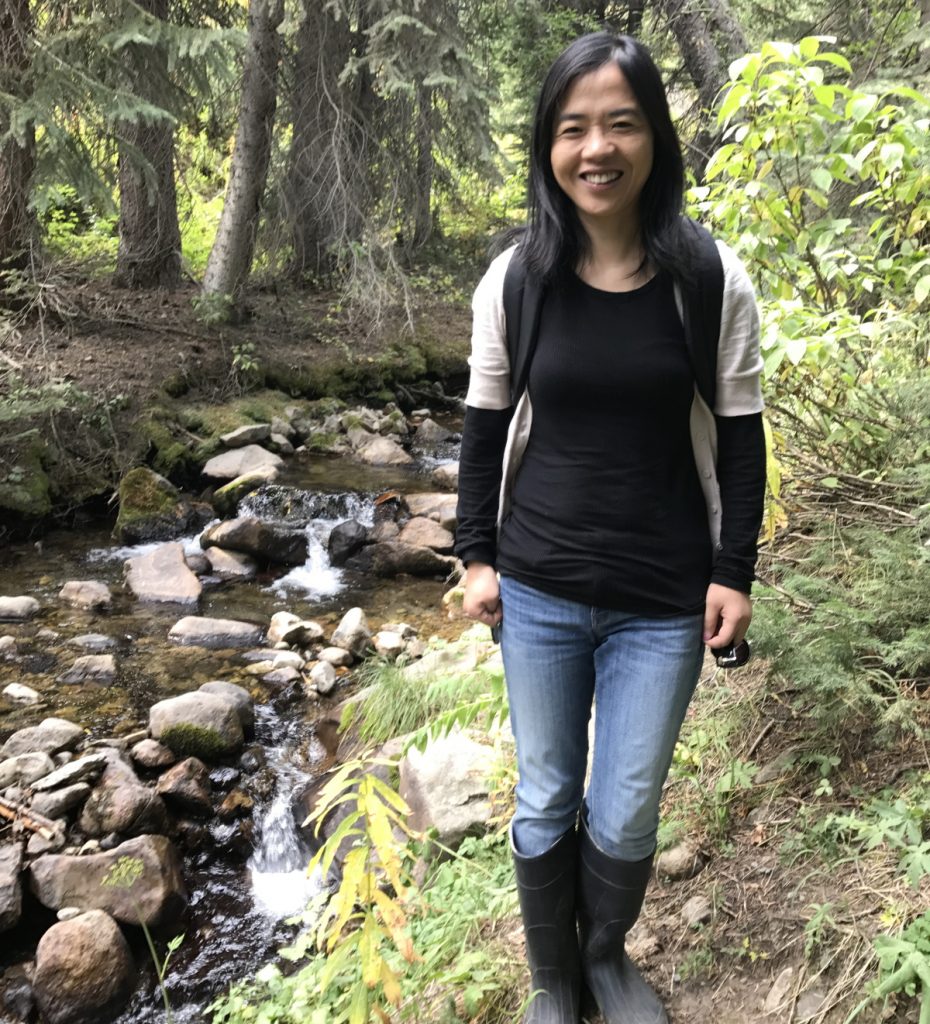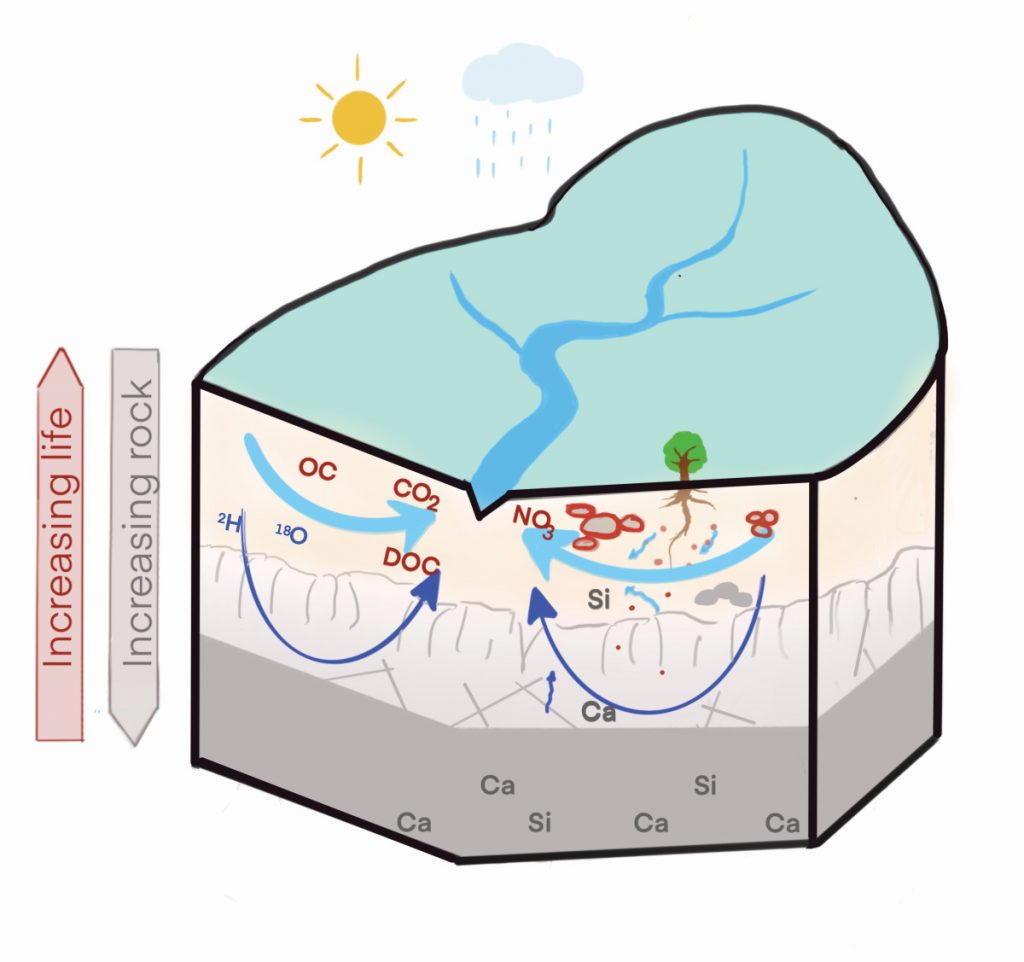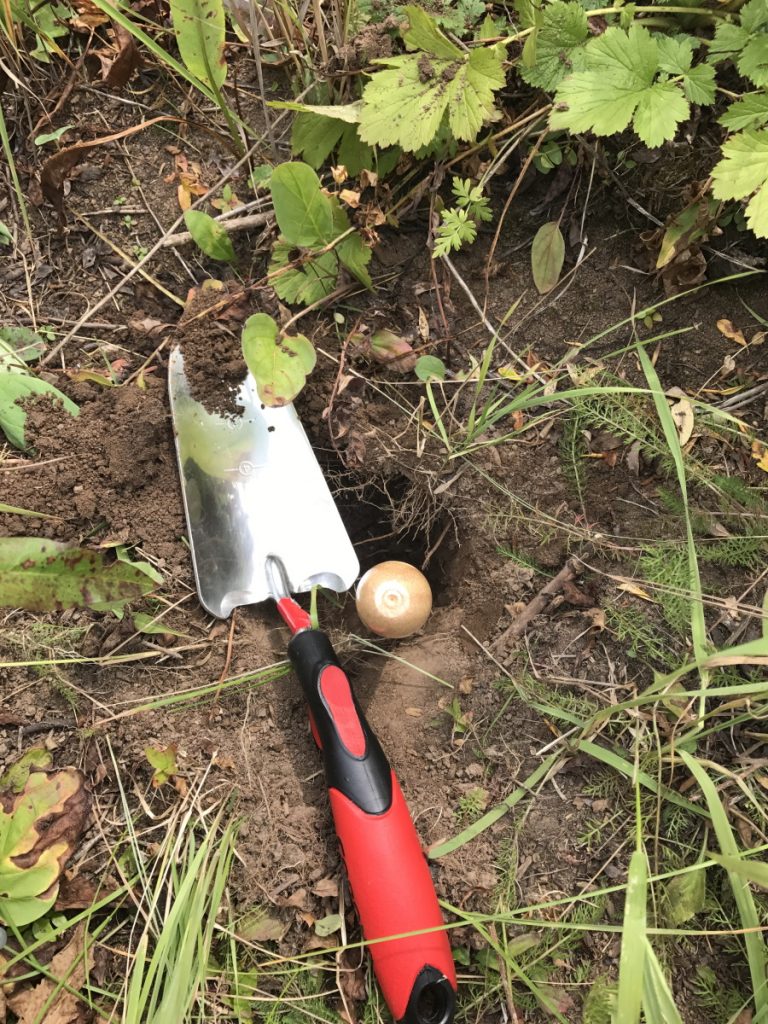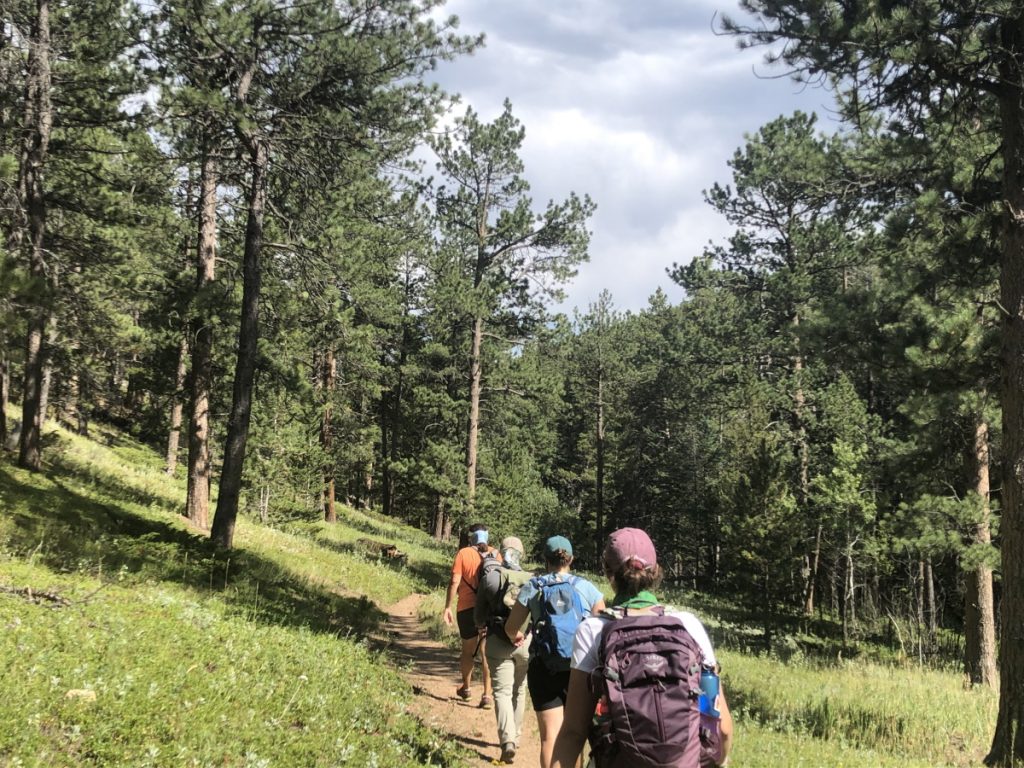How does climate change affect water quality?
Clean water is our most important natural resource. We need a reliable supply of drinking water to live. We also need water for industry, agriculture and even recreation. However, many of these uses put an incredible amount of pressure on water resources – a problem likely to get worse due to climate change. Professor Li Li, from Pennsylvania State University in the US, develops computer models to understand and predict how water quality is influenced by climate change and man-made changes to the environment
TALK LIKE AN ENVIRONMENTAL ENGINEER
BIOGEOCHEMISTRY – the study of the geochemical and biological processes in the natural environment including rivers, lakes and soils
HYDROLOGY – the study of the distribution, movement and management of water, including water cycle and water resources
MICROBIOLOGY – the study of microorganisms, including viruses, bacteria and fungi
ECOLOGY – a branch of biology concerning how plants and animals interact with the environment
GEOLOGY – the study of rocks and processes by which they are formed
WATER CATCHMENT AREA – an area of land through which water from rain, snow or ice drains into, such as a river or lake. It can be a vast area, like the land area that drains into oceans, or very small, like the land area that drains into a very small stream
WATER POLLUTION – when dangerous substances like toxic chemicals or microorganisms contaminate the water and affect the water quality
ORGANIC MATTER – material coming from living things (e.g. animals or plants) or their waste products
WASTEWATER – any water contaminated after human use, including domestic, industrial or agricultural uses. It may contain chemical, physical and biological pollutants
In developed countries, where water is available through the simple turn of a tap, it is easy to take the resource for granted, while for many people around the world, finding a source of clean water is a serious problem and may involve hours of travel. Wherever we are in the world, the reality is that the freshwater systems of our planet are under threat from inappropriate land uses, water pollution and climate change.
Addressing these problems and their potential consequences is a huge and urgent challenge. Prof Li Li and her team, the Li Reactive Water Group, based at the Pennsylvania State University in the US, want to tackle these issues before it is too late. They want to understand how climate change and modifications created by humans, such as converting forest area to agriculture, can influence water quality. Li explains, “Such understanding will ultimately help us develop theories and models that can be used to forecast water quality in streams, rivers, lakes, and groundwater, in a way similar to weather forecasting. This is important for risk assessment, mitigation, and adaption strategies as these changes continue to threaten water security.”
Li recognises that the only way to move forward is by collaborating with other research groups around the world. There have been movements in the science community to work together across traditional disciplines such as physics, chemistry, geology and ecology. This is important because in natural systems such as watersheds and lakes all processes influence each other, regardless of artificial disciplinary boundaries. The novelty of this approach is that it brings together scientists from different fields to understand how different things work together and to find novel, ‘outside of the box’ solutions. The team has established strong links with hydrologists, microbiologists, ecologists, geologists and biogeochemists, to name just a few.
Ultimately, the cross-disciplinary teams can create computer models that can be used to predict how climate and human-made changes impact water quality in a certain area over time – a forecast of water quality. There is no doubt that climate change has already affected and will continue to affect our water resources. What is worse is that water pollution, due to excess use of fertiliser in farms, wastewater from factories, or sediments from trees cut for construction, is adding toxic chemicals into rivers and streams that eventually flow into oceans.
One type of chemical that is of particular interest to Li is called dissolved organic carbon (DOC), which comes from the breakdown of living things, such as leaves and roots. It can drag dangerous contaminants into the water, as well as making water treatment a challenging process. Analysing levels of DOC is a good way to estimate how much CO2 can be released from organic matter, which is eventually emitted back to the atmosphere. For Li, DOC, “has an important role in determining the CO2 level in the atmosphere, which has significant links to climate warming.” However, it is important to note that changes in DOC are not necessarily caused by climate change. Many factors can influence this parameter, including acid rain and changes of land use, such as converting forests to cropland. In addition, soils recovering from acid rain are likely to release more DOC into the water and increase the release of CO2 from streams and rivers.
Initial results from Li’s team already show how DOC – and inevitably the amount of CO2 – can change during wet and cold versus dry and hot conditions. It turns out that areas surrounding rivers, lakes and reservoirs – known as the watershed – can hold the DOC from organic matter in the dry summer but release it quickly in the wet winter and spring. This release is not entirely surprising, as rain washes these chemicals down into the water. What is interesting, however, is the fact that Li and her team can now predict, with some levels of uncertainty, what may happen in extreme situations, like heavy rain and flooding, which are likely to accentuate the release of organic matter.
Li explains, “The models we built can be used by companies, governments and environmental organisations to understand how water quality can change under different scenarios such as flooding or droughts. This information can then be used to assess risks and decide strategies to mitigate or solve the problems.”
If you have a desire to investigate and solve environmental problems, then this could be a career for you. According to environmentalscience.org, there is a growing demand for professionals driven by increasing concerns about climate change and water quality. As a tester, you may want to visit Li’s lab for a fun day of activities testing the pH of different liquids like orange juices, vinegar, Coke, or even tap water. Or you may even apply for one of their summer courses learning computer modelling and data analysis.
 PROFESSOR LI LI
PROFESSOR LI LI
Professor of Environmental Engineering, Li Reactive Water Group, Department of Civil and Environmental Engineering, Pennsylvania State University, USA
FIELD OF RESEARCH: Environmental Engineering and Water Resources
RESEARCH PROJECT: The development of computer models to understand how climate change and modifications to the environment created by humans – such as cutting forest for use in agriculture – can affect water quality.
FUNDER: US National Science Foundation, US Department of Energy
Environmental engineering is an exciting field to study. Professionals in this field use principles of engineering, as well as soil science, chemistry and biology to find solutions to solve environmental problems. They can work in varied settings such as education, public health, pollution control or recycling. They can also work in government and make environmental related laws and policies, or consulting companies to help solve water resources and water quality related problems.
WHAT IS SO REWARDING AND CHALLENGING ABOUT ENVIRONMENTAL ENGINEERING?
A career in environmental engineering is undoubtedly challenging as there are many environmental issues that need a solution. Problems like climate change and water pollution are hard to solve because they are not localised problems, they are worldwide. Their resolution requires understanding human behaviour and societal issues. As an environmental engineer, collaboration and finding common ground is challenging, but it is the key to solving these issues. The reward is huge – you can help get clean water to millions of people who are in need or help make laws and regulations that combat climate change.
Reference
https://doi.org/10.33424/FUTURUM102
A conceptual diagram of a watershed as a natural integrator of hydrological flow paths and biogeochemical processes. The flow paths depend on climate, vegetation and soil properties. Reactive materials are illustrated here using organic carbon that decreases in abundance with depth and minerals that increase with depth. These physical and chemical structures dictate the contact time of water with reactive materials and regulate how much and how fast chemicals (e.g. DOC, Ca, Si) enter the stream (Li et al., 2020)*.
*Li et al. Toward catchment hydro-biogeochemical theories. WIREs Water. 2020;e1495. https://doi.org/10.1002/wat2.1495
TALK LIKE AN ENVIRONMENTAL ENGINEER
BIOGEOCHEMISTRY – the study of the geochemical and biological processes in the natural environment including rivers, lakes and soils
HYDROLOGY – the study of the distribution, movement and management of water, including water cycle and water resources
MICROBIOLOGY – the study of microorganisms, including viruses, bacteria and fungi
ECOLOGY – a branch of biology concerning how plants and animals interact with the environment
GEOLOGY – the study of rocks and processes by which they are formed
WATER CATCHMENT AREA – an area of land through which water from rain, snow or ice drains into, such as a river or lake. It can be a vast area, like the land area that drains into oceans, or very small, like the land area that drains into a very small stream
WATER POLLUTION – when dangerous substances like toxic chemicals or microorganisms contaminate the water and affect the water quality
ORGANIC MATTER – material coming from living things (e.g. animals or plants) or their waste products
WASTEWATER – any water contaminated after human use, including domestic, industrial or agricultural uses. It may contain chemical, physical and biological pollutants
In developed countries, where water is available through the simple turn of a tap, it is easy to take the resource for granted, while for many people around the world, finding a source of clean water is a serious problem and may involve hours of travel. Wherever we are in the world, the reality is that the freshwater systems of our planet are under threat from inappropriate land uses, water pollution and climate change.
Addressing these problems and their potential consequences is a huge and urgent challenge. Prof Li Li and her team, the Li Reactive Water Group, based at the Pennsylvania State University in the US, want to tackle these issues before it is too late. They want to understand how climate change and modifications created by humans, such as converting forest area to agriculture, can influence water quality. Li explains, “Such understanding will ultimately help us develop theories and models that can be used to forecast water quality in streams, rivers, lakes, and groundwater, in a way similar to weather forecasting. This is important for risk assessment, mitigation, and adaption strategies as these changes continue to threaten water security.”
Li recognises that the only way to move forward is by collaborating with other research groups around the world. There have been movements in the science community to work together across traditional disciplines such as physics, chemistry, geology and ecology. This is important because in natural systems such as watersheds and lakes all processes influence each other, regardless of artificial disciplinary boundaries. The novelty of this approach is that it brings together scientists from different fields to understand how different things work together and to find novel, ‘outside of the box’ solutions. The team has established strong links with hydrologists, microbiologists, ecologists, geologists and biogeochemists, to name just a few.
Ultimately, the cross-disciplinary teams can create computer models that can be used to predict how climate and human-made changes impact water quality in a certain area over time – a forecast of water quality. There is no doubt that climate change has already affected and will continue to affect our water resources. What is worse is that water pollution, due to excess use of fertiliser in farms, wastewater from factories, or sediments from trees cut for construction, is adding toxic chemicals into rivers and streams that eventually flow into oceans.
One type of chemical that is of particular interest to Li is called dissolved organic carbon (DOC), which comes from the breakdown of living things, such as leaves and roots. It can drag dangerous contaminants into the water, as well as making water treatment a challenging process. Analysing levels of DOC is a good way to estimate how much CO2 can be released from organic matter, which is eventually emitted back to the atmosphere. For Li, DOC, “has an important role in determining the CO2 level in the atmosphere, which has significant links to climate warming.” However, it is important to note that changes in DOC are not necessarily caused by climate change. Many factors can influence this parameter, including acid rain and changes of land use, such as converting forests to cropland. In addition, soils recovering from acid rain are likely to release more DOC into the water and increase the release of CO2 from streams and rivers.
Initial results from Li’s team already show how DOC – and inevitably the amount of CO2 – can change during wet and cold versus dry and hot conditions. It turns out that areas surrounding rivers, lakes and reservoirs – known as the watershed – can hold the DOC from organic matter in the dry summer but release it quickly in the wet winter and spring. This release is not entirely surprising, as rain washes these chemicals down into the water. What is interesting, however, is the fact that Li and her team can now predict, with some levels of uncertainty, what may happen in extreme situations, like heavy rain and flooding, which are likely to accentuate the release of organic matter.
Li explains, “The models we built can be used by companies, governments and environmental organisations to understand how water quality can change under different scenarios such as flooding or droughts. This information can then be used to assess risks and decide strategies to mitigate or solve the problems.”
If you have a desire to investigate and solve environmental problems, then this could be a career for you. According to environmentalscience.org, there is a growing demand for professionals driven by increasing concerns about climate change and water quality. As a tester, you may want to visit Li’s lab for a fun day of activities testing the pH of different liquids like orange juices, vinegar, Coke, or even tap water. Or you may even apply for one of their summer courses learning computer modelling and data analysis.
 PROFESSOR LI LI
PROFESSOR LI LI
Professor of Environmental Engineering, Li Reactive Water Group, Department of Civil and Environmental Engineering, Pennsylvania State University, USA
FIELD OF RESEARCH: Environmental Engineering and Water Resources
RESEARCH PROJECT: The development of computer models to understand how climate change and modifications to the environment created by humans – such as cutting forest for use in agriculture – can affect water quality.
FUNDER: US National Science Foundation, US Department of Energy
Environmental engineering is an exciting field to study. Professionals in this field use principles of engineering, as well as soil science, chemistry and biology to find solutions to solve environmental problems. They can work in varied settings such as education, public health, pollution control or recycling. They can also work in government and make environmental related laws and policies, or consulting companies to help solve water resources and water quality related problems.
WHAT IS SO REWARDING AND CHALLENGING ABOUT ENVIRONMENTAL ENGINEERING?
A career in environmental engineering is undoubtedly challenging as there are many environmental issues that need a solution. Problems like climate change and water pollution are hard to solve because they are not localised problems, they are worldwide. Their resolution requires understanding human behaviour and societal issues. As an environmental engineer, collaboration and finding common ground is challenging, but it is the key to solving these issues. The reward is huge – you can help get clean water to millions of people who are in need or help make laws and regulations that combat climate change.
HOW CAN ENVIRONMENTAL ENGINEERING ADDRESS CLIMATE CHANGE?
Climate change is not like any problem we have faced before. It is on a global scale and requires cooperation of people from different countries. This problem can only be solved with innovative new ideas and technologies. Environmental engineers cannot solve the problem by themselves – they will need to work with ecologists, geologists and hydrologists to understand processes in natural systems and make predictions, preparations and adaptations to manage resources.
WHAT ARE THE ESSENTIAL SKILLS REQUIRED FOR A CAREER IN ENVIRONMENTAL ENGINEERING?
Above all, environmental engineers are problem solvers. These professionals must be able to identify and anticipate problems before they are able to address these issues. Good interpersonal skills are also a must, as environmental engineers often work in large teams, from scientists to technicians and mechanics. Finally, complex jobs may require a certain degree of imagination, to foresee how the proposed solution is going to work in real life.
HOW TO BECOME AN ENVIRONMENTAL ENGINEER
• A degree in environmental engineering will give you a good range of skills to offer your employer and strong career prospects. You can also aspire to become an environmental engineer if you have a degree in a related field, such as hydrology, ecology, geology or chemistry.
• Going for a professional engineering licence will allow you to aim for higher roles with more responsibility. After licensing, environmental engineers can register with the American Academy of Environmental Engineers and Scientists: https://www.aaees.org/becomeboardcertified
• Options for careers are incredibly varied and can come from different sectors, including agriculture and forestry, water management, environmental policy and public health. You may find opportunities in engineering companies or as a consultant. Some positions may even offer the chance to travel to participate in different projects around the world.
• According to the US Bureau of Labour Statistics, entry-level environmental engineers can earn up to $88,000 annually.
PATHWAY FROM SCHOOL TO ENVIRONMENTAL ENGINEERING
The best subjects to study to become an environmental engineer are maths, physics, biology and chemistry. Many universities offer a degree in environmental engineering, including Princeton University, MIT and Stanford University. In most cases, you can choose from a wide range of specialisms, allowing you to focus on a particular area and hone your skills for the job that you want. Typically, these specialisms include air quality, waste management and water resources, among others.
Li recommends taking extra courses in coding, computer modelling and data analysis to obtain critical skills and tools to help you in different situations. You may also wish to study further for a master’s or a doctorate, but for many roles, this is not essential.
Often, employers value practical experience. There are engineering courses which provide job experience which may be worth considering. For further information, environmentalscience.org is an excellent place to start: http://www.environmentalscience.org/career/environmentalengineer
HOW DID LI BECOME AN ENVIRONMENTAL ENGINEER?
WHAT WERE YOUR INTERESTS AS A CHILD?
I loved reading, was good at writing short stories and I aspired to be a writer. I was also interested in the natural world – I was fascinated with lots of different things, such as the sky, trees and sand.
WHO OR WHAT HAS INSPIRED YOU IN YOUR CAREER?
Things changed in my teenage years in high school. In China, teenagers decide in high school whether they want to go for science and engineering, or social studies and humanities. I could not decide, because I was interested in a lot of things and was also good at all these subjects.
One day, I overheard my mom asking for her friend’s opinion about which direction I should go in. I overheard them saying that girls are not good at science and engineering and that I should choose social studies or humanities. I was a defiant teenager, and I decided to do the opposite, so I picked science and engineering! Looking back, I realise that I have often done things that are the opposite of what others expect me to do.
WHAT HAVE BEEN YOUR PROUDEST CAREER ACHIEVEMENTS SO FAR?
I am proud that I stayed in science and still had children. Being a professor and scientist is demanding. Juggling between work and family life is challenging, as both demand time and you only have 24 hours a day! There were multiple occasions when I almost slipped out of this career. For example, when I first had a baby and when I had a difficult time landing a faculty job. I had a lot of support from PhD advisors and colleagues though and they helped me to get through these challenging times.
My proudest career achievement is that I became a university professor. This position gives me the opportunity to teach and inspire the younger generation and help them realise the severity of many environmental problems. Even if they don’t become environmental scientists or engineers, they can still learn how to become responsible citizens that minimise waste input and live sustainable lives – for example, by buying houses powered by solar power and driving cars that do not add a lot of carbon to the atmosphere.
I am also proud that I get to work with graduate students who do environmental-related research. These students progress and become professionals after they finish graduate schools. It is very rewarding to see them grow.
WHAT ATTRIBUTES HAVE MADE YOU A SUCCESSFUL ENGINEER?
I tend to think of my groups’ work leaning more toward science instead of engineering. Our goal is to create knowledge and understanding of processes and mechanisms that lead to water quality change, and this knowledge then feeds into the engineer’s work in solving these problems.
Diligence, persistence, intellectual curiosity (wanting to know answers and solving puzzles), and aspiration to excel are some of the key traits that make a successful scientist. But everyone is different and has their strengths, so there is not just one formula.
LI’S TOP TIPS FOR STUDENTS
01 – Follow your heart and do what excites you.
02 – Don’t let others dictate your future. Don’t conform to others’ expectations.
03 – Challenge yourself! It’s the only way to reach your dreams.
Write it in the comments box below and Li will get back to you. (Remember, researchers are very busy people, so you may have to wait a few days.)









